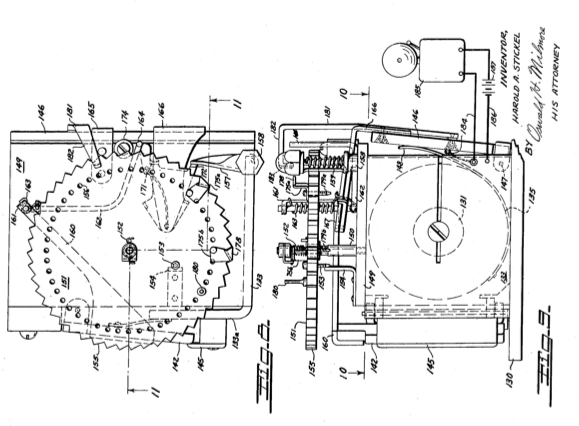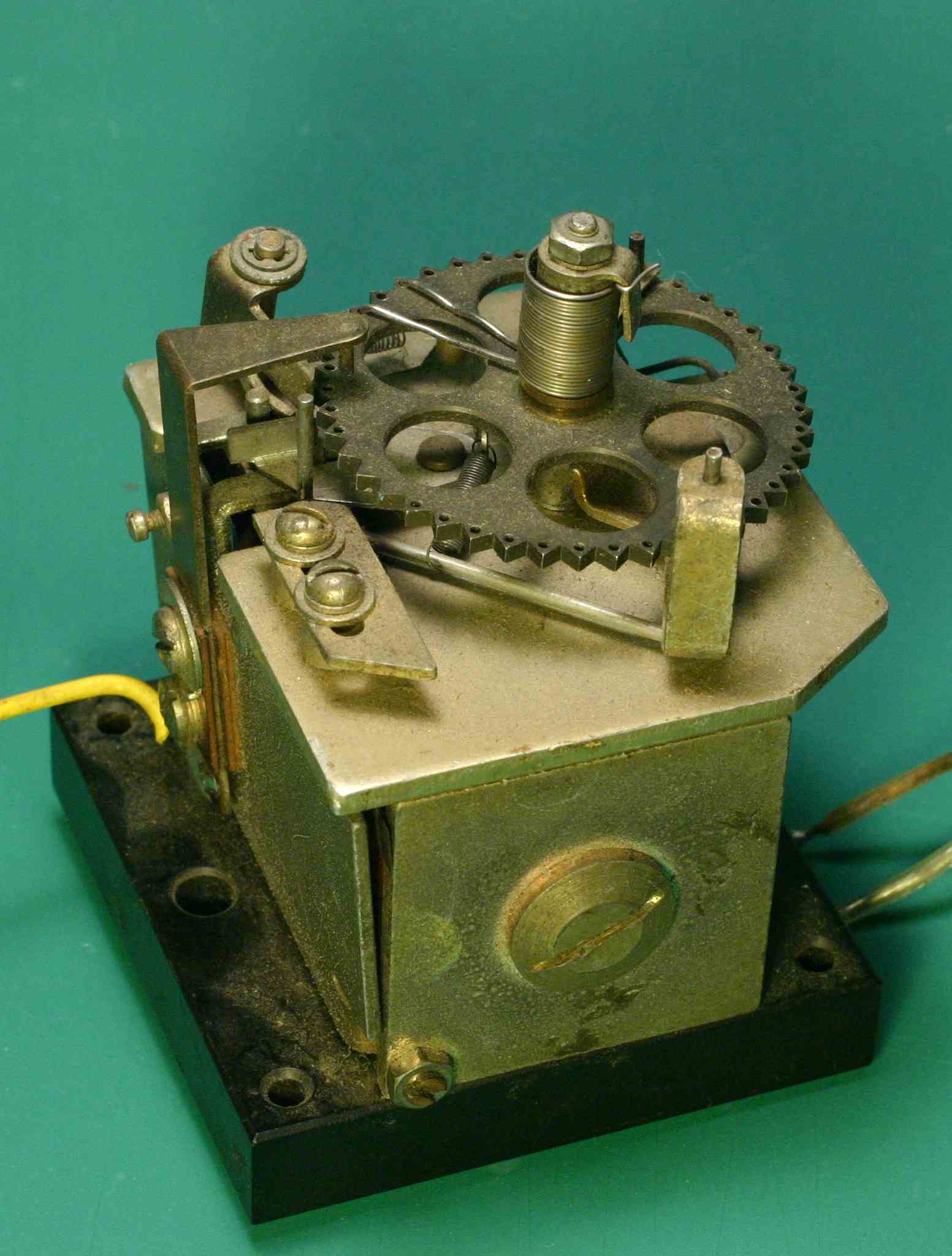Dial-a-Door Remembered
Ward Cunningham
October 2008



The SECODER's nameplate cites three patents, all of which are available online. Patents issued October 3, 1944 and November 13, 1951 are for inventions by Harold A. Stickel of San Francisco. His 1951 drawings resemble our device the most. The third patent, issued January 15, 1963 to inventor Herbert M. Penningroth of Hales Corners, Wisconsin, seems to date the manufacture of our device to 1963 or later. That would make it six years old or less when we put it into service. Hardly old junk then. |

 We're always happy to have blogers write about our work. 40-year old work is no exception. Here are blogs we've noticed that notice us.
|
Creative Commons, Attribution Share-Alike
(cc) 2008, Ward Cunningham










